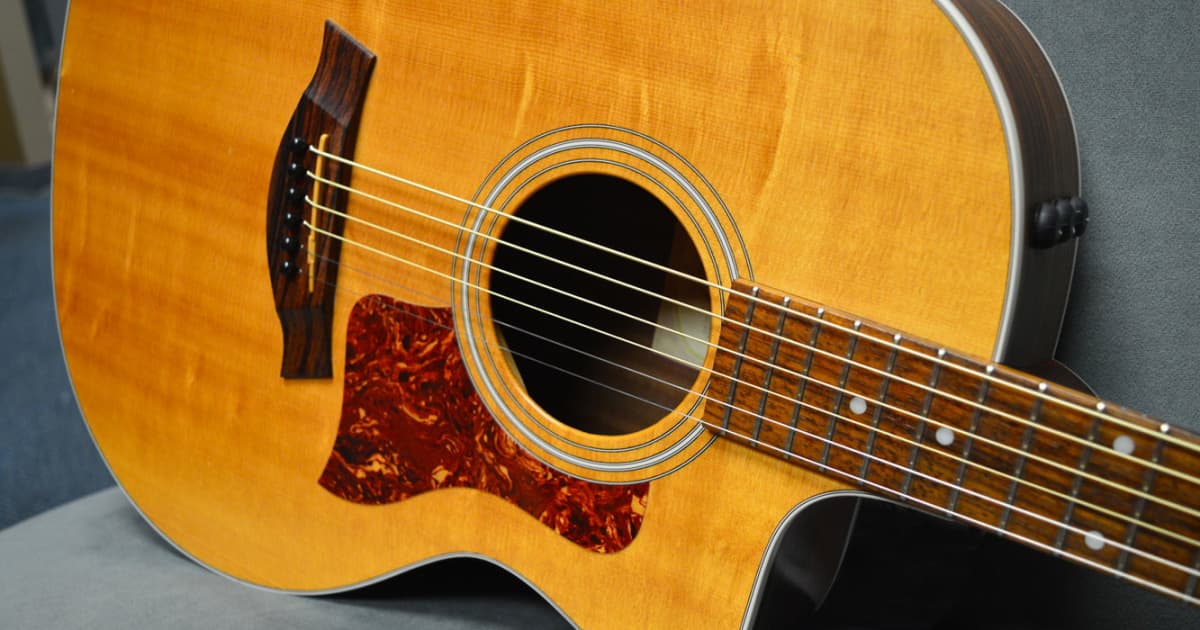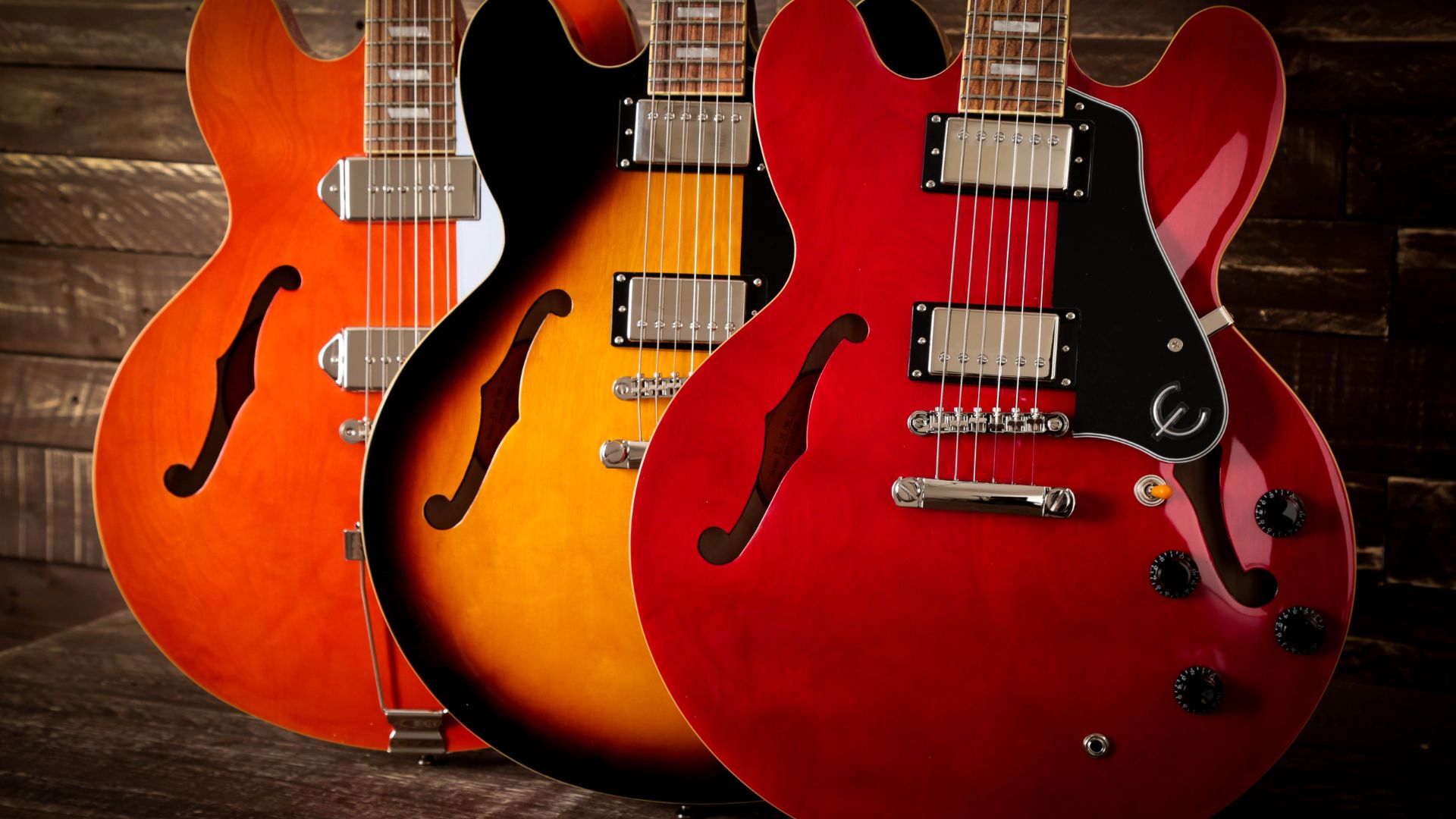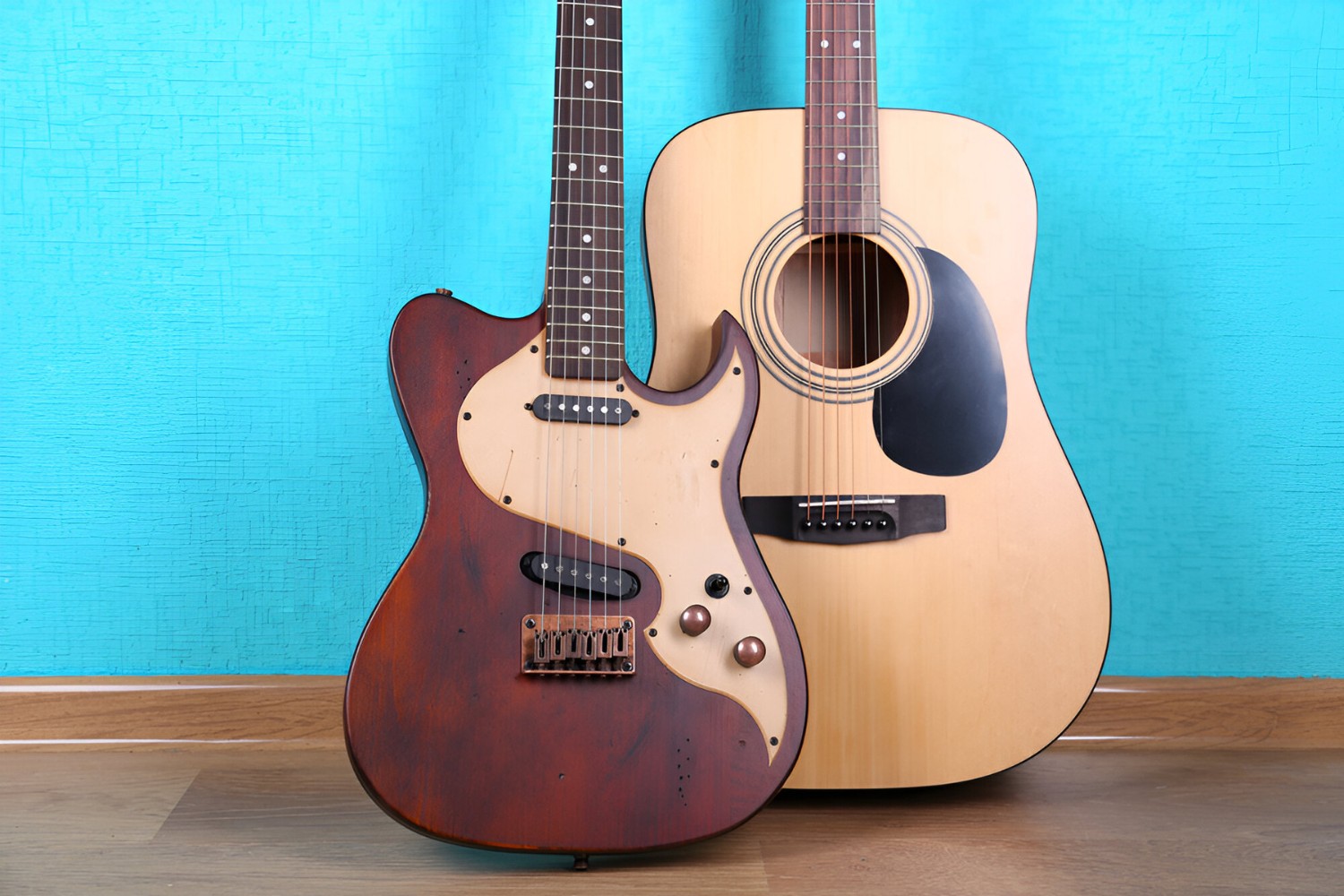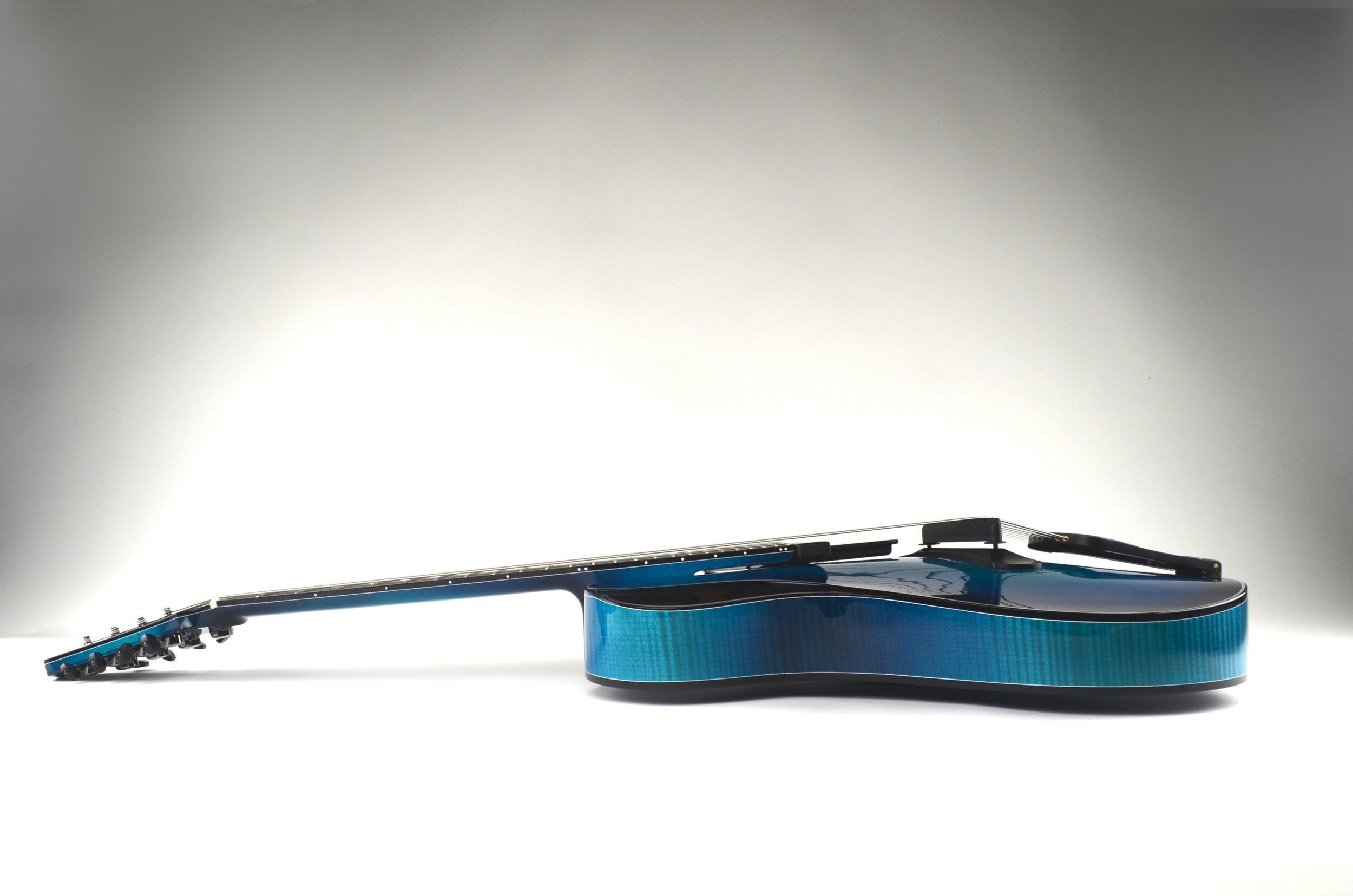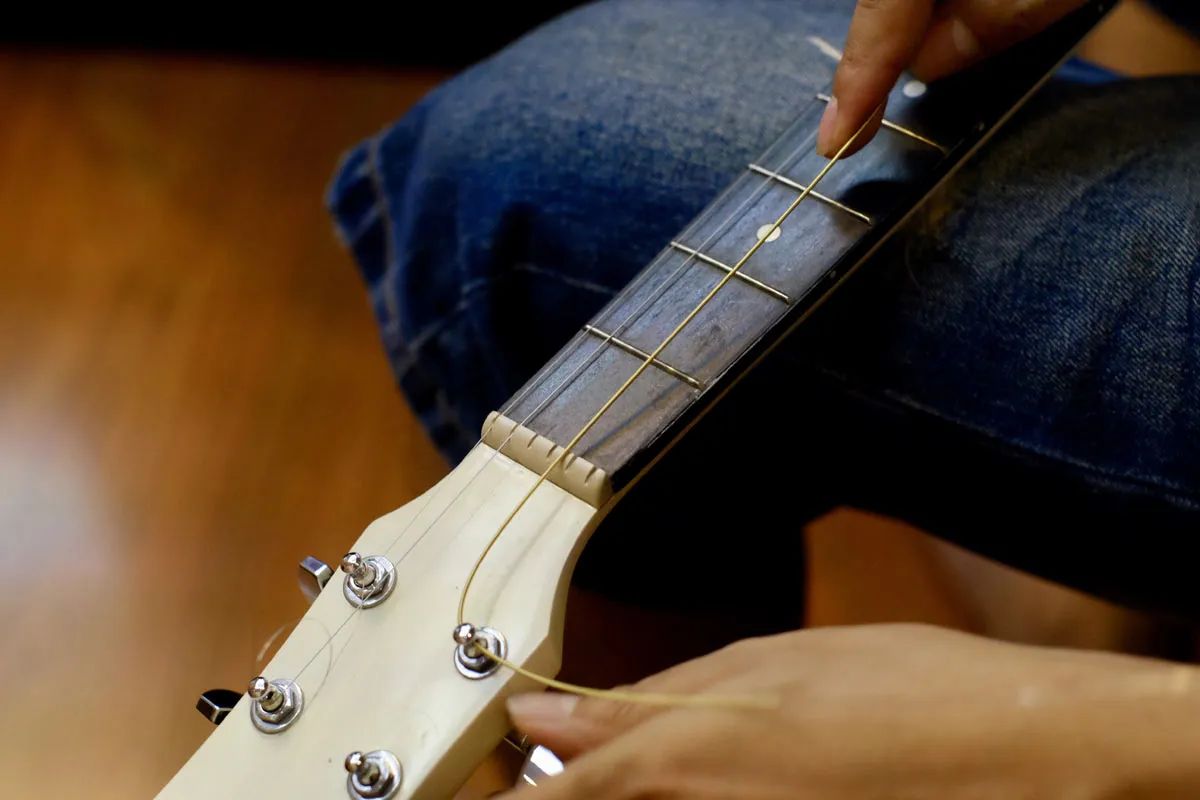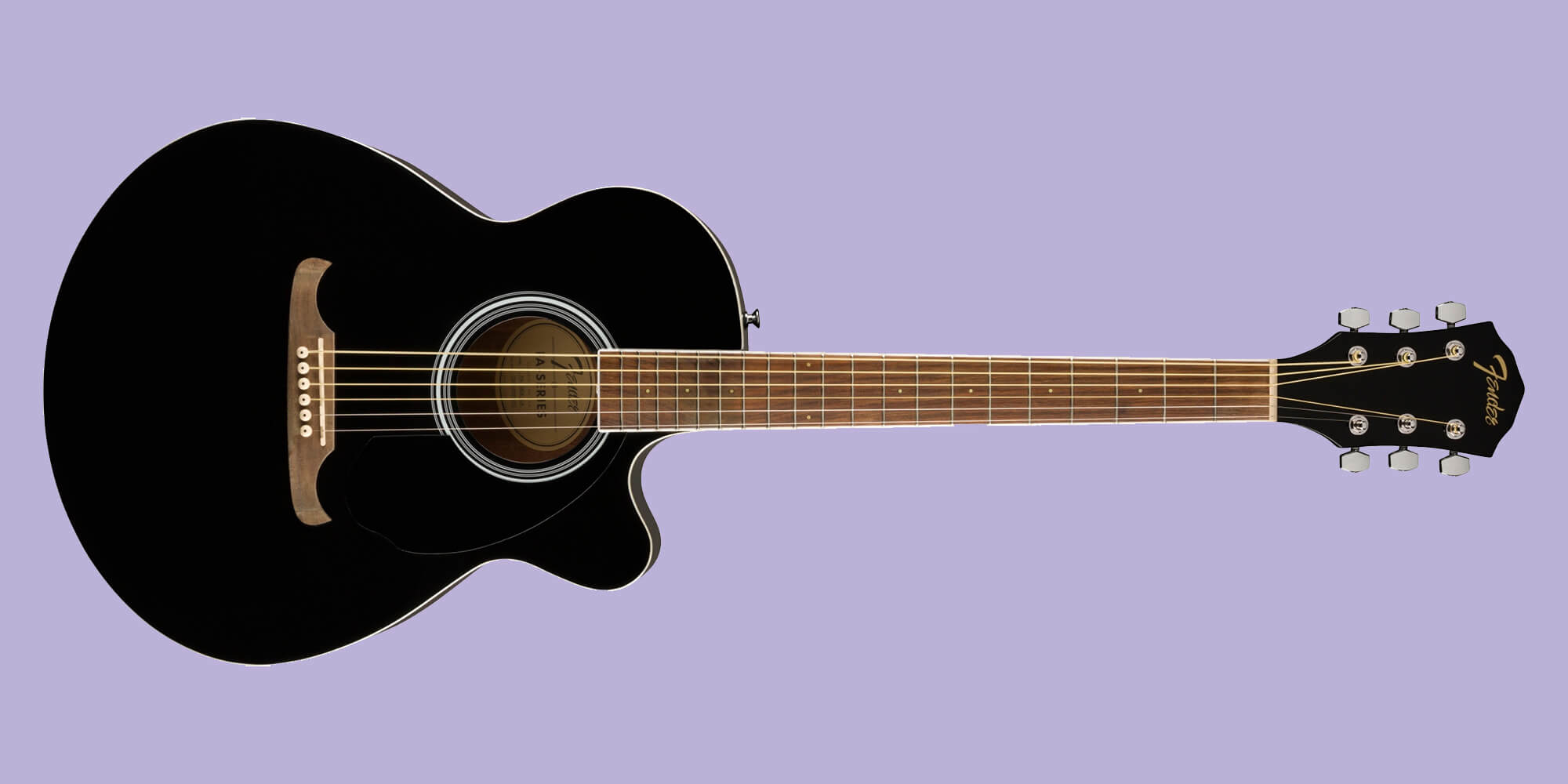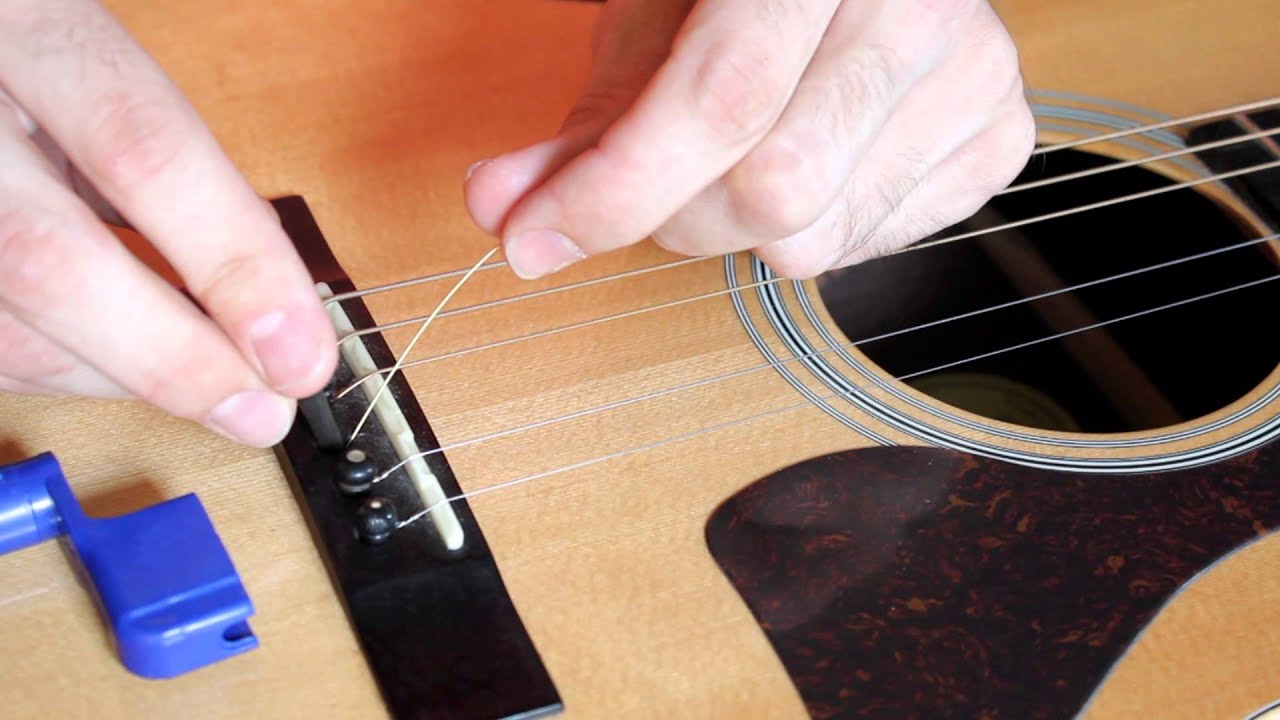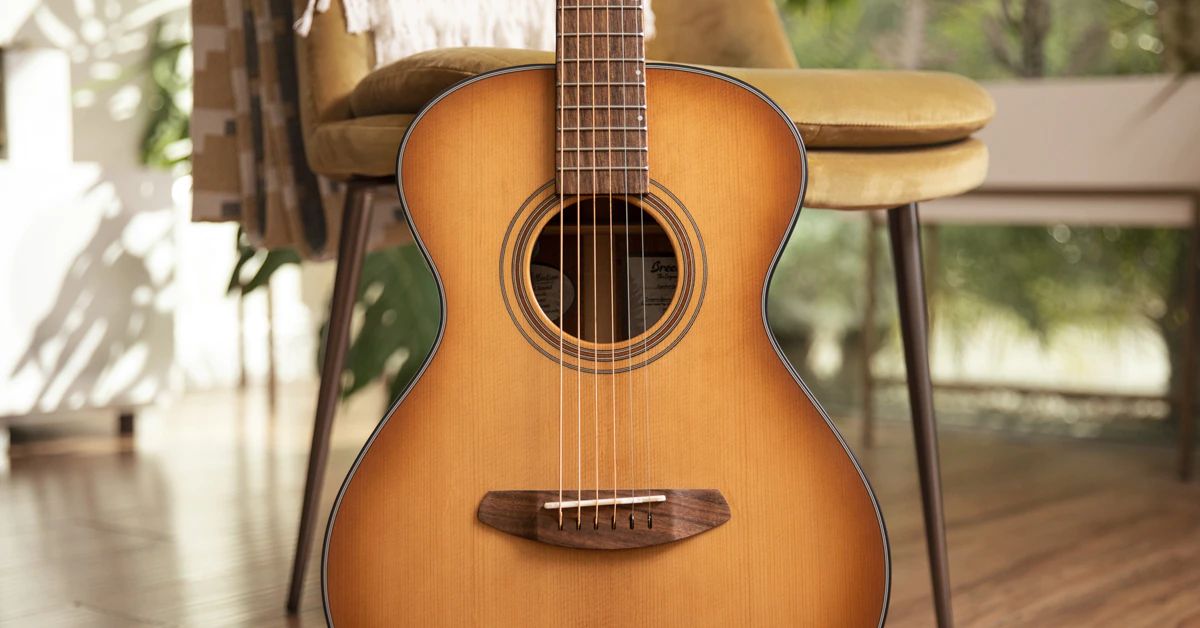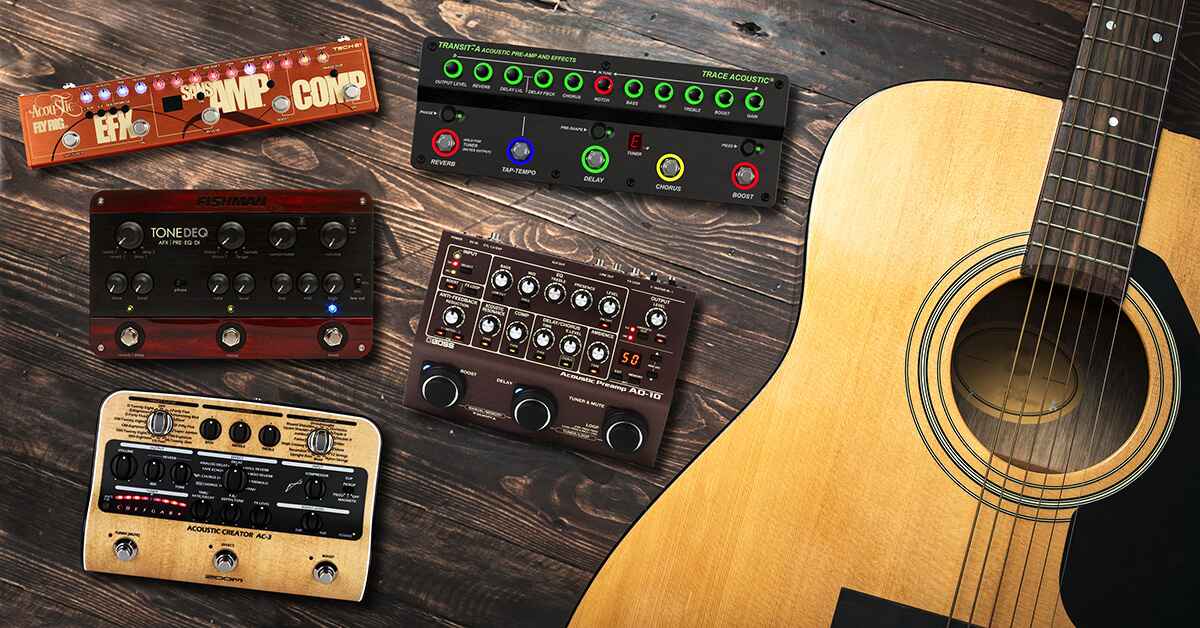Introduction
An acoustic guitar is more than just a musical instrument; it’s a work of art, a symbol of craftsmanship and dedication. When shopping for a guitar, you may be astounded by the wide range of prices, with some models costing a few hundred dollars and others reaching exorbitant five-figure sums. So, what exactly makes an acoustic guitar expensive?
There are several factors that contribute to the high price tag of a premium acoustic guitar. From the use of high-quality materials to the intricate craftsmanship involved in its construction, every aspect plays a role in determining its value. In this article, we will delve into the various factors that can make an acoustic guitar expensive and explore why these elements make a significant difference in the instrument’s overall quality and sound.
When it comes to crafting a top-tier acoustic guitar, every detail matters. From the carefully selected tone woods to the skilled hands that shape the guitar’s body, expert craftsmanship ensures that every instrument is unique and of exceptional quality. The materials used in the guitar’s construction are meticulously chosen to provide the best tonal qualities and durability.
One crucial aspect that contributes to the cost of an acoustic guitar is the selection of tone woods. Premium guitars often utilize high-quality woods, such as Sitka spruce, ebony, rosewood, and mahogany. These woods are known for their exceptional resonance and tonal characteristics, producing a rich, balanced sound that captivates players and listeners alike.
Another vital consideration is the sound quality that the guitar produces. Highly priced guitars are meticulously designed to offer superior sound projection, tonal clarity, and sustain. The resonant properties of the tone woods, coupled with precise bracing patterns and construction techniques, contribute to a guitar’s ability to produce exceptional sound quality across its tonal range.
The bracing pattern used inside the guitar plays a significant role in its sonic characteristics. Guitars are braced internally to reinforce the top and back, providing structural integrity and influencing the instrument’s tonal response. Premium guitars often feature hand-scalloped bracing, which allows for better resonance, responsiveness, and harmonic complexity.
In addition to the bracing, construction techniques also play a part in the cost of an acoustic guitar. Premium guitars are typically crafted using traditional methods that have been refined over generations. These techniques, combined with the expertise of experienced luthiers, result in instruments of exceptional quality and playability.
The finishing and detailing of an acoustic guitar also contribute to its overall value. High-end guitars are meticulously crafted with meticulous attention to detail, including perfectly executed bindings, intricate inlay work, and flawlessly applied finishes. These finishing touches not only enhance the visual appeal of the guitar but also speak to the level of craftsmanship and care that goes into its creation.
Brand reputation plays a significant role in determining the price of an acoustic guitar. Established brands with a strong reputation for producing high-quality instruments often demand higher prices due to the recognition and trust associated with their name. These brands have proven their worth through years of consistently delivering top-notch guitars.
Customization and limited editions are another factor that can drive up the cost of an acoustic guitar. Some manufacturers offer the opportunity for buyers to customize certain aspects of a guitar, such as the tonewoods or inlay design. Limited edition models that are produced in small quantities can also carry a premium price tag, as they are sought after by collectors and enthusiasts.
Finally, supply and demand dynamics also help determine the price of an acoustic guitar. Factors such as rarity, availability, and market trends can influence the cost of a particular model. Limited supply or high demand for a specific guitar can create a scarcity that drives up the price, making it more desirable to collectors and players.
Understanding the factors that contribute to the cost of an acoustic guitar can provide valuable insights when searching for the perfect instrument. Whether you’re a professional musician or an avid hobbyist, investing in a high-quality guitar can greatly enhance your playing experience and bring a lifetime of enjoyment.
Craftsmanship and Materials
When it comes to the world of premium acoustic guitars, craftsmanship and materials are at the forefront of what sets them apart. The meticulous attention to detail and the use of high-quality materials contribute to the exceptional sound and playability of these instruments.
Expert craftsmanship is a hallmark of expensive acoustic guitars. Skilled luthiers, with years of experience, painstakingly shape and assemble each instrument by hand. These craftsmen have honed their skills over time, ensuring that every aspect of the guitar’s construction is executed with precision.
From the selection of the finest tone woods to the intricate bracing patterns, every step in the crafting process is carefully considered. Premium guitars utilize top-notch materials, such as Sitka spruce for the top, rosewood or mahogany for the back and sides, and ebony for the fingerboard. These tonewoods are chosen not only for their aesthetic beauty but also for their exceptional tonal characteristics.
The choice of tonewoods significantly affects the sound and resonance of the guitar. Sitka spruce, for example, is renowned for its balanced tone and excellent projection. Rosewood offers warm and rich overtones, while mahogany provides a focused and responsive sound. The integration of these high-quality materials contributes to the instrument’s overall tonal quality and character.
In addition to the tonewoods, the quality of the bracing inside the guitar’s body plays a vital role in its sound production. Bracing refers to the lightweight wooden supports that reinforce the top and back of the guitar. These braces are carefully positioned and shaped to control the vibration of the top, ensuring optimal resonance and stability.
High-end acoustic guitars often feature hand-scalloped bracing, where the wood is carefully carved to allow for more flexibility and responsiveness. This intricate bracing pattern allows the top to vibrate more freely, resulting in enhanced tonal complexity and dynamic range. The craftsmanship involved in crafting these delicate braces is a testament to the expertise of the luthier.
Craftsmanship is not limited to the structural aspects of the guitar; it also extends to the finishing and detailing. Premium guitars undergo meticulous finishing processes to ensure flawlessly applied finishes, intricate bindings, and exquisite inlay work. These finishing touches not only enhance the visual appeal of the instrument but also contribute to its overall quality and value.
It’s worth noting that the craftsmanship of an acoustic guitar is not solely dependent on the skills of the luthier. The quality of the materials used, including the wood’s density, grain pattern, and age, also plays a significant role in the final outcome. All of these factors combined result in a truly exceptional instrument that not only sounds incredible but also stands the test of time.
Investing in a guitar crafted with the utmost attention to detail and exceptional materials ensures a superior playing experience. The combination of expert craftsmanship and the use of high-quality materials in premium acoustic guitars sets them apart from their more affordable counterparts, making them a coveted choice among musicians and collectors alike.
Tone Woods
One of the key factors that contribute to the expense of an acoustic guitar is the selection of tone woods. The choice of wood used in the construction of the instrument greatly impacts its overall tone, resonance, and projection. Premium acoustic guitars often feature carefully selected and high-quality tone woods, adding to their desirability and cost.
There are several types of tonewoods that are commonly used in acoustic guitar construction, each with its own unique characteristics and tonal qualities. Sitka spruce, being one of the most popular choices for the top or soundboard, offers a well-balanced sound with clear articulation and good projection. Its versatility makes it suitable for a wide range of musical styles and playing techniques.
Rosewood is another highly sought-after tonewood, prized for its warm and rich tone. It adds depth and complexity to the guitar’s sound, with pronounced lows and sparkling highs. Mahogany, on the other hand, is known for its focused and punchy tone. It offers a strong midrange and excellent note definition, making it ideal for players who prefer a more direct and responsive sound.
Other tonewoods commonly used for back and sides include maple, ebony, and ovangkol. Maple offers a bright and articulate sound, with enhanced note clarity and sustain. Ebony, known for its density and stability, provides a balanced and clear tone. Ovangkol, with its warm and full-bodied sound, can be a cost-effective alternative to rosewood, offering similar tonal characteristics.
While the choice of tone woods is crucial, their quality and aging process also play a significant role in the instrument’s sound. High-end guitars often use aged or seasoned tonewoods, which have been allowed to naturally dry for several years. This aging process enhances the wood’s resonance and stability, resulting in a more mature and refined sound.
The grain pattern of the tonewoods also affects the guitar’s tone. Straight grains are generally preferred, as they allow for better sound transmission and minimize the risk of cracking. Tighter grain patterns are associated with a more focused and precise sound, while wider grain patterns may produce a warmer and more open tone.
It’s important to note that tonewoods are not limited to just the top, back, and sides of the guitar. The choice of wood for the neck and fingerboard also contributes to the instrument’s overall tonal qualities. For example, mahogany necks are often favored for their warm and resonant tone, while maple necks offer a brighter and more articulate sound.
Ultimately, the selection and combination of tonewoods in an acoustic guitar are carefully considered to achieve a specific sonic goal. The synergy between the different woods creates a harmonious balance and richness in the instrument’s sound. When combined with expert craftsmanship, the choice of high-quality and well-matched tonewoods elevates the guitar’s overall tonal characteristics, delivering a superior playing experience.
Acoustic guitars crafted with premium tone woods are highly sought after by musicians seeking the utmost in tonal excellence. The careful selection and use of these tonewoods contribute to the unique voice and exceptional sound quality of high-end instruments, making them an investment worth considering for serious players and collectors.
Sound Quality
When it comes to acoustic guitars, sound quality is paramount. The ability of an instrument to produce a rich, balanced, and pleasing tone is one of the primary factors that contribute to its value and desirability. Expensive acoustic guitars are meticulously designed and crafted to deliver exceptional sound quality across their tonal range.
One of the key contributors to sound quality is the choice of tone woods used in the guitar’s construction. Different woods offer distinct tonal characteristics, and the combination of these woods affects the overall sound of the instrument. Tonewoods such as Sitka spruce for the top, rosewood or mahogany for the back and sides, and ebony for the fingerboard contribute to the guitar’s resonance, sustain, and tonal clarity.
The sound produced by an acoustic guitar is also influenced by its internal structure and bracing pattern. The bracing refers to the lightweight wooden supports inside the guitar’s body that provide stability and structural integrity. High-end guitars often feature hand-scalloped bracing, which allows for better resonance, responsiveness, and harmonic complexity. This intricate bracing pattern enhances the guitar’s ability to produce a vibrant and expressive sound.
The shape and size of the guitar body also play a role in sound quality. Dreadnought, concert, and grand auditorium are just a few of the body shapes available, each with its own unique sound characteristics. Larger-bodied guitars tend to have a more robust and powerful sound, while smaller-bodied guitars offer a more balanced and focused tone.
The sound quality of an acoustic guitar is further influenced by the construction techniques employed during its creation. Expert luthiers meticulously shape and assemble the guitar, taking great care to ensure proper fit and alignment of the components. Attention to detail is crucial in achieving optimal string resonance, tonal balance, and overall playability.
The finishing touches on a high-end acoustic guitar also contribute to its sound quality. The type and thickness of the finish applied to the guitar can affect its resonance and sustain. Thin and well-applied finishes allow the wood to vibrate freely, resulting in a more open and resonant tone.
Furthermore, the quality and setup of the guitar’s hardware, such as the bridge, nut, and tuning machines, also play a part in sound quality. These components need to be precisely crafted and carefully installed to ensure proper string tension, intonation, and tuning stability. A well-maintained and properly set up acoustic guitar will produce a more consistent and pleasing tone.
Ultimately, the sound quality of an acoustic guitar is the culmination of careful design, meticulous craftsmanship, and the use of top-quality materials. Expensive guitars are crafted to offer superior tonal complexity, clarity, and projection. When played, they respond to the player’s touch with sensitivity and nuance, allowing for a wide range of expressive possibilities.
For professional musicians, serious enthusiasts, and those who simply have a discerning ear for quality, investing in an expensive acoustic guitar ensures a highly rewarding and inspiring musical experience. The exceptional sound quality of these instruments elevates the joy of playing and provides a lifetime of musical enjoyment.
Bracing
Bracing is a crucial aspect of acoustic guitar construction that greatly influences its sound and overall playability. The bracing pattern used inside the guitar’s body provides structural support and affects the instrument’s tonal characteristics. Expensive acoustic guitars often feature carefully designed bracing that enhances resonance, response, and tonal complexity.
The primary purpose of bracing is to reinforce the top and back of the guitar, providing stability while allowing the wood to vibrate and produce sound. The positioning and shaping of the braces impact the distribution of energy in the guitar body, influencing its tonal response.
High-end acoustic guitars often employ hand-scalloped bracing, a technique where the braces are carefully carved with delicate scallops to reduce mass and allow for greater flexibility. The scalloping of the braces enables the top to vibrate more freely and respond dynamically to the player’s touch, resulting in enhanced tonal complexity and nuance.
The specific bracing pattern used can vary depending on the guitar’s body shape and intended sound qualities. For example, dreadnought guitars typically feature an X-bracing pattern, creating a balanced and robust sound with strong bass response. On the other hand, concert-style or smaller-bodied guitars may incorporate different bracing patterns, such as fan bracing or ladder bracing, to achieve a more focused and articulate tone.
The thickness and positioning of the braces also play a crucial role in shaping the guitar’s sound. Thinner braces can allow for a more responsive and lively sound, while thicker braces tend to provide more stability and sustain. Luthiers carefully calibrate these dimensions to strike a balance between structural integrity and sonic characteristics.
The quality of the wood used for the bracing also contributes to the guitar’s sound. High-grade and well-aged spruce or cedar are commonly used for braces due to their lightweight and resonant properties. These woods are chosen for their ability to transmit vibrations effectively, producing a rich and balanced tone.
Each luthier may have their own unique approach to bracing, incorporating their expertise and years of experience. Some luthiers may experiment with hybrid bracing patterns, combining elements from different styles to achieve a specific sonic goal. This level of craftsmanship and attention to detail in the bracing sets apart expensive acoustic guitars, resulting in superior tonal characteristics and playability.
It’s worth noting that the bracing inside an acoustic guitar is not visible to the player or audience, but its impact on the instrument’s sound is undeniable. The careful design and execution of the bracing pattern ensure that the guitar resonates optimally and projects sound efficiently.
For musicians and enthusiasts who seek exceptional tonal complexity, responsiveness, and dynamic range, investing in an acoustic guitar with expertly crafted bracing can provide an unparalleled musical experience. The careful consideration of bracing patterns, coupled with the use of high-quality wood, is one of the many factors that make expensive acoustic guitars highly sought after by discerning players and collectors.
Construction Techniques
When it comes to expensive acoustic guitars, the construction techniques employed by skilled luthiers play a significant role in delivering exceptional sound quality, playability, and overall instrument quality. These techniques, often passed down through generations, are honed to perfection to ensure that every aspect of the guitar is meticulously crafted.
One crucial aspect of construction techniques is the method used to assemble the guitar’s body. Traditional acoustic guitars are typically built using either a “top and back” or “top, back, and sides” construction approach. In a “top and back” method, the top and back of the guitar are individually crafted and then joined together. The “top, back, and sides” method involves constructing the top, back, and sides as separate components and later joining them together. Each approach has its own nuances and can impact the guitar’s resonance and structural integrity.
The type of joinery used in connecting the guitar’s neck to the body is also a crucial construction technique. Common types include the dovetail joint and the bolt-on neck joint. The dovetail joint is a traditional technique that requires meticulous hand-fitting for a precise and secure connection. On the other hand, the bolt-on neck joint allows for easier adjustment and maintenance.
Building a high-quality acoustic guitar involves precise shaping and carving of various components. The top, back, and sides are carefully graduated, meaning they are gradually thinned towards the edges, allowing for optimal vibration and tone production. The neck is shaped with precise dimensions and contours to ensure comfortable playability and proper alignment with the body.
The fretboard, often made of ebony or rosewood, requires precision in fret slotting and positioning. Skilled luthiers meticulously shape and dress the frets to ensure smooth and accurate playability across the entire fingerboard.
Gluing is another critical construction technique that affects the guitar’s overall stability and resonance. High-end guitars utilize specialized glues, such as hide glue, that provide optimal sonic properties and allow for future repairs and adjustments. The precise application of glue ensures a strong and durable bond between the guitar’s components.
The quality and attention to detail in the final setup of the guitar also contribute to its playability. Expert luthiers meticulously adjust the action, string height, and intonation to achieve optimal playability and ensure that the instrument is a joy to play. Attention is also given to the nut and saddle materials and heights to maximize tone and sustain.
Construction techniques are not limited to the visible aspects of the guitar. Internal components, such as kerfing and linings, play a vital role in maintaining the structural integrity and stability of the instrument. These elements are carefully selected and installed to ensure that the guitar can withstand the tension of the strings and changes in humidity over time.
Overall, the intricate and sophisticated construction techniques employed by skilled luthiers contribute to the superior quality and performance of expensive acoustic guitars. These techniques, combined with the use of high-quality materials, result in instruments that offer exceptional sound, playability, and durability.
For musicians who demand the utmost in craftsmanship and performance, investing in an acoustic guitar constructed using these refined techniques ensures a rewarding musical experience and a lifelong companion.
Finishing and Detailing
Finishing and detailing are essential elements of the construction process for expensive acoustic guitars. These final touches not only enhance the aesthetic appeal of the instrument but also reflect the level of craftsmanship and attention to detail invested in its creation. From flawless finishes to intricate bindings and exquisite inlay work, these aspects elevate the overall quality and value of the instrument.
The finish applied to the guitar serves both a protective and aesthetic purpose. Premium acoustic guitars often feature a thin and well-applied finish that allows the wood to vibrate freely, resulting in optimal sound projection and resonance. Nitrocellulose lacquer and high-quality polyurethane finishes are among the popular choices for achieving a smooth and durable surface.
In addition to the finish, bindings are meticulously executed to secure and protect the edges of the guitar’s top and back. The bindings not only provide a finished look but also prevent potential damage to the instrument’s body. They can be made from various materials, such as wood, plastic, or ivoroid, and are beautifully crafted to seamlessly blend with the overall design of the guitar.
Further enhancing the visual appeal, expensive acoustic guitars often feature intricate inlay work. Inlays can be found on the fretboard, headstock, rosette, and even the body. Skilled artisans carefully design and execute these decorative elements, using materials such as mother-of-pearl, abalone, and exotic woods. Inlay work adds an element of individuality and artistic expression to the instrument, making each guitar a unique piece of artwork.
The level of detailing on an expensive acoustic guitar is exceptional. Every aspect, from the precise placement of the frets to the smoothness of the fret ends, is meticulously attended to. The bridge and nut are carefully shaped and polished, ensuring that the strings are correctly seated for optimal playability and intonation. These minute details may seem inconspicuous, but they greatly contribute to the overall comfort and enjoyment of playing the instrument.
Aside from the visual details, high-end acoustic guitars often feature elegant appointments such as engraved tuners, custom headstock inlays, or hand-carved pickguards. These unique embellishments further enhance the instrument’s aesthetic appeal and make it stand out from more mass-produced models.
Overall, the finishing and detailing of an expensive acoustic guitar are testaments to the precise craftsmanship and artistry involved in its creation. The flawless finishes, intricate bindings, and exquisite inlay work all contribute to the visual beauty and individuality of each instrument. These meticulous details serve as a testament to the passion and dedication of the luthiers and make each guitar a true work of art.
For those who appreciate the combination of exceptional sound quality and visual aesthetics, investing in an expensive acoustic guitar with impeccable finishing and detailing is an opportunity to own a masterpiece that both sounds and looks extraordinary.
Brand Reputation
Brand reputation plays a significant role in the world of expensive acoustic guitars. Established brands with a long-standing history and a strong reputation for producing high-quality instruments often command higher prices. The reputation and recognition associated with these brands contribute to the perceived value and desirability of their guitars.
Over the years, certain guitar manufacturers have earned a reputation for consistently delivering exceptional instruments. These brands have cultivated a loyal following of musicians and collectors who trust the brand’s commitment to craftsmanship, innovation, and attention to detail. When purchasing a guitar from a reputable brand, customers have a certain level of confidence in the quality of the instrument they are investing in.
Brand reputation is built on a number of factors. One of these factors is the brand’s history and tradition. Some guitar manufacturers have been in operation for decades or even centuries, allowing them to develop a deep understanding of the instrument and refine their craft over time. This long history adds to their credibility and reputation as trusted providers of high-quality guitars.
Another aspect that contributes to brand reputation is the endorsement and use of their guitars by renowned musicians. When respected artists choose to play and be associated with a particular brand, it further enhances the brand’s image and reinforces its reputation for producing top-notch instruments. The preference of professional musicians can influence the decision of other players looking for an exceptional guitar.
Consistency in quality is a crucial element in the reputation of a brand. When customers consistently have positive experiences with a brand’s guitars, it creates a sense of reliability and trust. The reputation of producing instruments with superior sound quality, playability, and craftsmanship builds a strong foundation for the brand’s standing in the market.
Customer service and support are also factors that contribute to a brand’s reputation. Brands that prioritize customer satisfaction and provide excellent support, such as offering warranty coverage and facilitating repairs or maintenance, earn a positive reputation among their customers. This level of care and engagement further solidifies the brand’s position as a reliable and reputable manufacturer.
It’s important to note that brand reputation alone should not be the sole factor when choosing an acoustic guitar. Ultimately, the decision should be based on personal preferences, playing style, and the specific characteristics and sound qualities desired in an instrument. However, for those looking for consistency, reliability, and a proven track record of excellence, a guitar from a reputable brand can provide peace of mind and assurance.
Expensive acoustic guitars from well-established brands often embody the culmination of years of experience, innovation, and dedication to craftsmanship. The recognition, reputation, and trust associated with these brands contribute to the allure and value of their instruments. When purchasing an acoustic guitar from a brand with a strong reputation, musicians can have confidence in knowing they are investing in an instrument backed by the expertise and tradition of a respected manufacturer.
Customization and Limited Editions
Customization and limited editions add another dimension of exclusivity and allure to expensive acoustic guitars. Many manufacturers offer the option for customers to customize certain aspects of their instrument to suit their preferences and personal style. Additionally, limited edition models produced in small quantities provide collectors and enthusiasts with the opportunity to own a truly unique and rare instrument.
The ability to customize certain elements of an acoustic guitar allows players to create an instrument that meets their specific needs and tastes. Customization options can include choices of tonewoods, finishes, inlay designs, bindings, and even hardware. This level of personalization enables musicians to have a guitar that not only sounds incredible but also reflects their own personality and artistic vision.
Customization can also extend to the guitar’s playability. Some manufacturers offer options for neck shape, fingerboard radius, and fret size, allowing players to optimize the instrument to their playing style and preferences. These personalized touches contribute to a more comfortable and enjoyable playing experience.
Limited editions are highly coveted by collectors and enthusiasts alike. These models are produced in small quantities, often with unique features or design elements that distinguish them from regular production guitars. Limited editions can feature special tonewoods, exclusive finishes, signature artist models, or commemorative designs. The exclusivity and rarity of these instruments contribute to their desirability and higher price points.
Purchasing a limited edition acoustic guitar not only provides a unique instrument but also becomes a statement piece in a collection. These guitars can appreciate in value over time, particularly if they are associated with renowned musicians or have a significant historical or cultural background.
For musicians looking for an instrument that is truly one-of-a-kind, many manufacturers offer bespoke or custom shop services. These services allow players to collaborate with master luthiers to create a completely unique instrument, tailored precisely to their specifications. Custom shop guitars often incorporate the highest-quality materials, meticulous craftsmanship, and exceptional attention to detail.
While customization and limited editions add prestige and exclusivity to the instrument, it’s important to note that the core qualities of a guitar, such as sound quality, playability, and craftsmanship, should still be the primary considerations when making a purchase. Customization and limited editions are additional options that provide a touch of personalization and rarity.
Whether it’s the opportunity to customize specific features or the allure of owning a limited edition model, customization and limited editions offer something special to those seeking an exceptional acoustic guitar. The ability to create a customized instrument that meets personal preferences or the chance to own a rare and unique guitar adds an extra layer of exclusivity and personal connection to the instrument.
Supply and Demand
Supply and demand dynamics play a significant role in determining the price and availability of expensive acoustic guitars. The interplay between these two factors can have a substantial impact on the market, influencing both the desirability and cost of certain models.
One aspect that affects the supply of expensive acoustic guitars is the availability of high-quality materials. Certain tonewoods used in guitar construction, such as Brazilian rosewood, have become increasingly scarce and regulated due to conservation efforts. The limited supply of these rare and sought-after tonewoods can drive up the price of guitars made with them.
The availability of skilled luthiers also impacts the supply of high-end guitars. Crafting an acoustic guitar requires a high level of expertise and experience. As the number of skilled luthiers is relatively limited, the supply of handcrafted guitars is inherently constrained. This scarcity of skilled craftsmen can contribute to higher prices for their instruments.
Additionally, the demand for expensive acoustic guitars can fluctuate due to various factors. For example, the popularity of certain musical genres or the influence of popular artists can create spikes in demand for specific models or brands. Limited-edition guitars associated with renowned musicians or iconic albums can become highly sought after, increasing their market value.
Another factor that can impact demand is the reputation and prestige associated with owning an expensive acoustic guitar. Musicians and collectors often aspire to own instruments from reputable brands or models that are renowned for their exceptional craftsmanship and sound quality. The exclusivity of high-end guitars and their perceived status among fellow musicians can drive up demand.
Economic factors also play a role in supply and demand dynamics. During times of economic prosperity, musicians may be more willing to invest in high-end instruments. Conversely, during periods of economic downturn, demand for expensive guitars may decrease as individuals prioritize their spending on essential items.
Limited production runs can also impact supply and demand. Manufacturers may intentionally restrict the number of guitars produced, creating a sense of scarcity and exclusivity among potential buyers. Limited quantities combined with high demand can result in higher prices for these instruments in the secondary market.
Supply and demand dynamics are constantly evolving, influenced by various factors, trends, and market conditions. The balance between supply and demand ultimately determines the price and availability of expensive acoustic guitars. As demand increases, prices may rise, and certain models may become more challenging to acquire.
Understanding the relationship between supply and demand can provide valuable insights to musicians and collectors looking to purchase an expensive acoustic guitar. It helps to have an awareness of market trends, the availability of specific models or brands, and the scarcity of certain materials.
Ultimately, the decision to invest in an expensive acoustic guitar should be based on personal preferences, intended use, and the instrument’s core qualities such as sound quality, playability, and craftsmanship. However, being mindful of supply and demand dynamics can help musicians navigate the market and make informed decisions when selecting their dream instrument.
Conclusion
Expensive acoustic guitars are not simply instruments; they are the result of meticulous craftsmanship, the use of high-quality materials, and an unwavering commitment to sonic excellence. From the carefully selected tone woods to the intricate bracing patterns, every detail is thoughtfully considered to create instruments that stand out among the rest.
Craftsmanship and materials are paramount in determining the value of an acoustic guitar. Expert luthiers shape and assemble each instrument by hand, ensuring that every component is meticulously crafted. The choice of tonewoods, the precision of the bracing, the quality of constructions techniques – all these factors contribute to the tonal complexity, resonance, and overall playability of the instrument.
Brand reputation plays a significant role in the world of expensive acoustic guitars. Established brands with a history of delivering exceptional instruments are trusted and sought after by musicians and collectors alike. Customization options and limited editions add further appeal and exclusivity, allowing players to personalize their instrument or own a rare and unique piece.
Supply and demand dynamics can also influence the availability and price of expensive acoustic guitars. The scarcity of high-quality materials, limited production runs, and shifts in popularity or economic conditions all play a role. Understanding these dynamics can help musicians make informed decisions when entering the market.
In conclusion, expensive acoustic guitars represent the pinnacle of craftsmanship, design, and sonic artistry. They are instruments that inspire and evoke emotion, bringing joy and fulfillment to players and listeners alike. Whether it’s the exceptional sound quality, the visual beauty, or the prestige associated with owning a renowned instrument, these guitars offer a remarkable playing experience and a lifetime of musical enjoyment.







